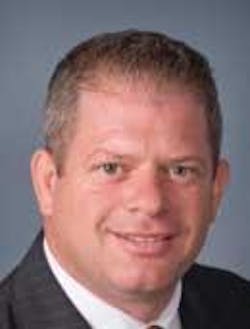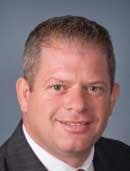Interview with Michael Augins,President, Sirona Dental Systems, LLC
by Jeffrey B. Dalin, DDS, FACD, FAGD, FICD
For more on this topic, go to www.dentaleconomics.com and search using the following key words: Michael Augins, Sirona Dental Systems, CEREC system, Bluecam, Dr. Jeff Dalin.
Dr. Dalin: This month I am talking with Michael Augins, president of Sirona Dental Systems, LLC. The company has recently released CEREC AC, along with some other enhancements to the CEREC system. Michael, would you give me a brief history of the CEREC unit?
Augins: The CEREC method was developed by Drs. Moermann and Brandstini at the University of Zurich. The first patient was treated in 1985 with a prototype unit 5, and in 1986, Siemens acquired the license to market and develop the system. In 1994, the CEREC 2 unit was introduced. In 1997, Patterson Dental became the exclusive North American distributor of the system and the dental division of Siemens was spun out. This resulted in the formation of Sirona.
In 2000 and 2003, new software changes were introduced that made the system easier to use. In 2007, the MCXL milling chamber was introduced and in 2009 the CEREC AC, powered by Bluecam, debuted.
Dr. Dalin: How has the Bluecam improved the system?
Augins: The Bluecam has improved the speed, accuracy, and ease of use for capturing digital impressions. This allows users to take full arch digital impressions that can be sent to a milling machine or lab via our connect capabilities.
Dr. Dalin: So the biggest selling points of these units are high precision, ease of use, and speed. Let's look at this from the perspective of an average general practitioner. Why should he or she take a serious look at adding this technology to a practice? We know the accuracy is good, but what about the ROI (return on investment)?
Augins: There are economic benefits to the doctors and to their patients. When a dentist creates restorations chairside, he or she keeps the entire professional fee because costs of impression materials are eliminated, as well as the fees of the second appointment. Generally speaking, the break–even point can be achieved with 10 to 14 chairside units manufactured per month.
For larger restorations, three– or four–unit bridges for example, the dentist can benefit by eliminating the cost of impression materials and transmitting digital impressions to the lab.
Dr. Dalin: I understand another concern is doctor and staff training. In order to make this technology work, how much training is required?
Augins: As with any new treatment modality, training is required to master the technique. Together with our partners at Patterson, we provide new purchasers with a two–day basic training technique and $1,000 voucher toward advanced training courses. We have more than 20 training centers and 120 basic, intermediate, and advanced trainers. Basic training is generally sufficient to learn how to operate the system at a proficient level, but I generally recommend that new users plan to take two to three advanced courses if they want to fully master the system.
Dr. Dalin: What are some of your company's other new developments?
Augins: CEREC Connect is a process whereby users can upload digital impressions to a Web portal, and then send that data to the participating lab of their choice. The lab uses the data to have our company manufacture a physical model, or in some cases the lab directly manufactures the restoration. The digital impression process eliminates the need for impression material, and saves on the cost of shipping and storing impressions.
CEREC and Galileos integration offers significant benefits in the planning and placement of implants by enabling users to plan the case from the restoration down rather than the implant up. By designing the restoration first, the placement, angulation, and size of the implant can be optimized.
Dr. Dalin: How do you see development of the market for CAD/CAM and digital impressioning units? Do you see this fitting into a broader trend toward digitalization and integration in dentistry?
Augins: Clearly, dentistry is going digital. This means that the entire restorative process will be digitalized, from diagnosis and planning through the design and placement of the final restoration. We believe that, in the not too distant future, the majority of restorations will be manufactured through digital means.
Dr. Dalin: Is there anything else you would like to tell readers?
Augins: The time to invest in CAD/CAM is now. No technology offers a better combination of performance, ROI, and wow factor. It is a proven practice builder that differentiates your practice and offers patient benefits.
Michael Augins serves as president of Sirona Dental Systems, LLC, a U.S. subsidiary of Sirona Dental Systems. He is responsible for the sales, marketing, service, and support functions of Sirona's U.S. operations. Augins has an MBA degree from the Darden School at the University of Virginia. You can contact Augins at [email protected].
Jeffrey B. Dalin, DDS, FACD, FAGD, FICD, practices general dentistry in St. Louis. He is the editor of St. Louis Dentistry magazine, and spokesman and critical–issue–response–team chairman for the Greater St. Louis Dental Society. Contact him at [email protected].

